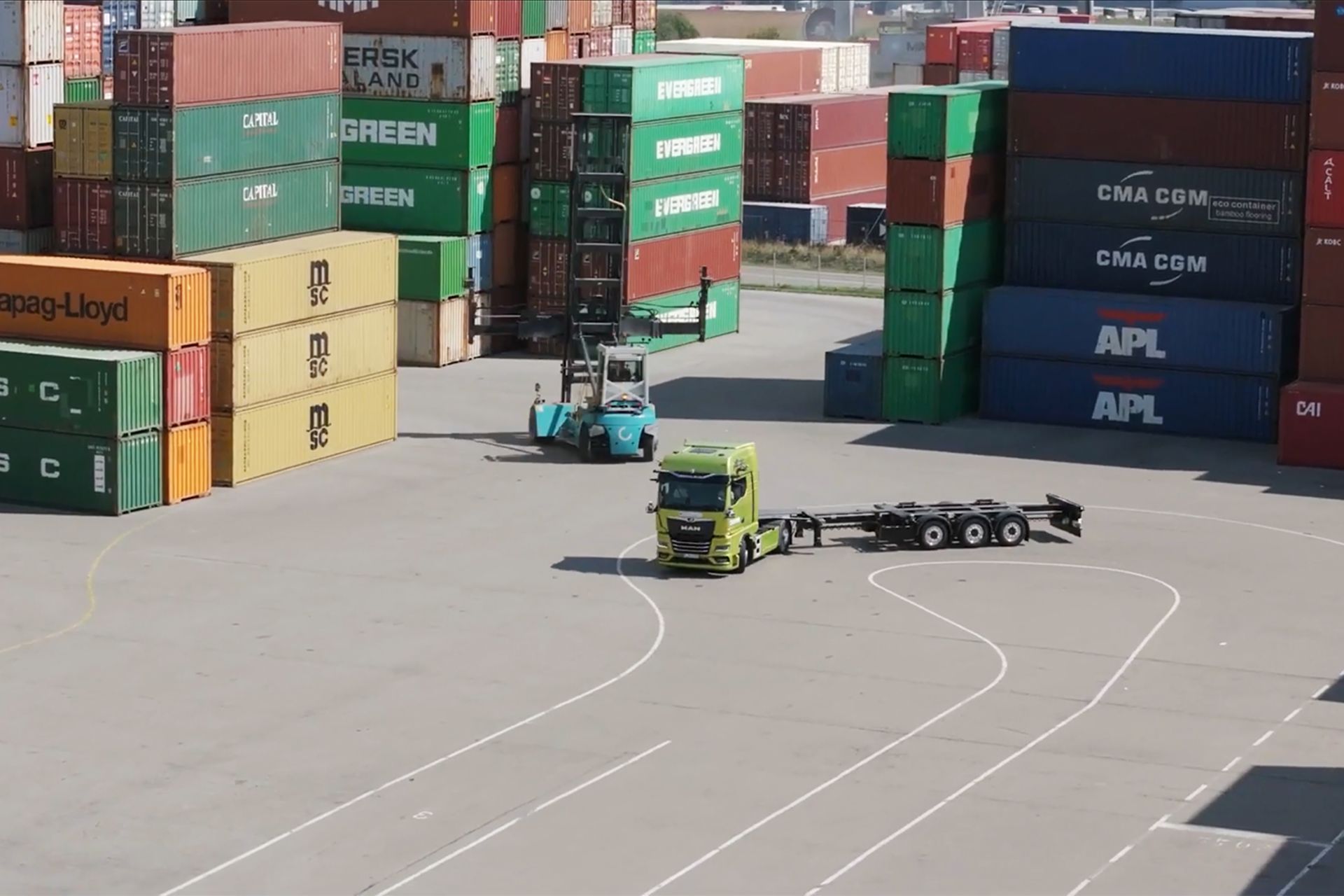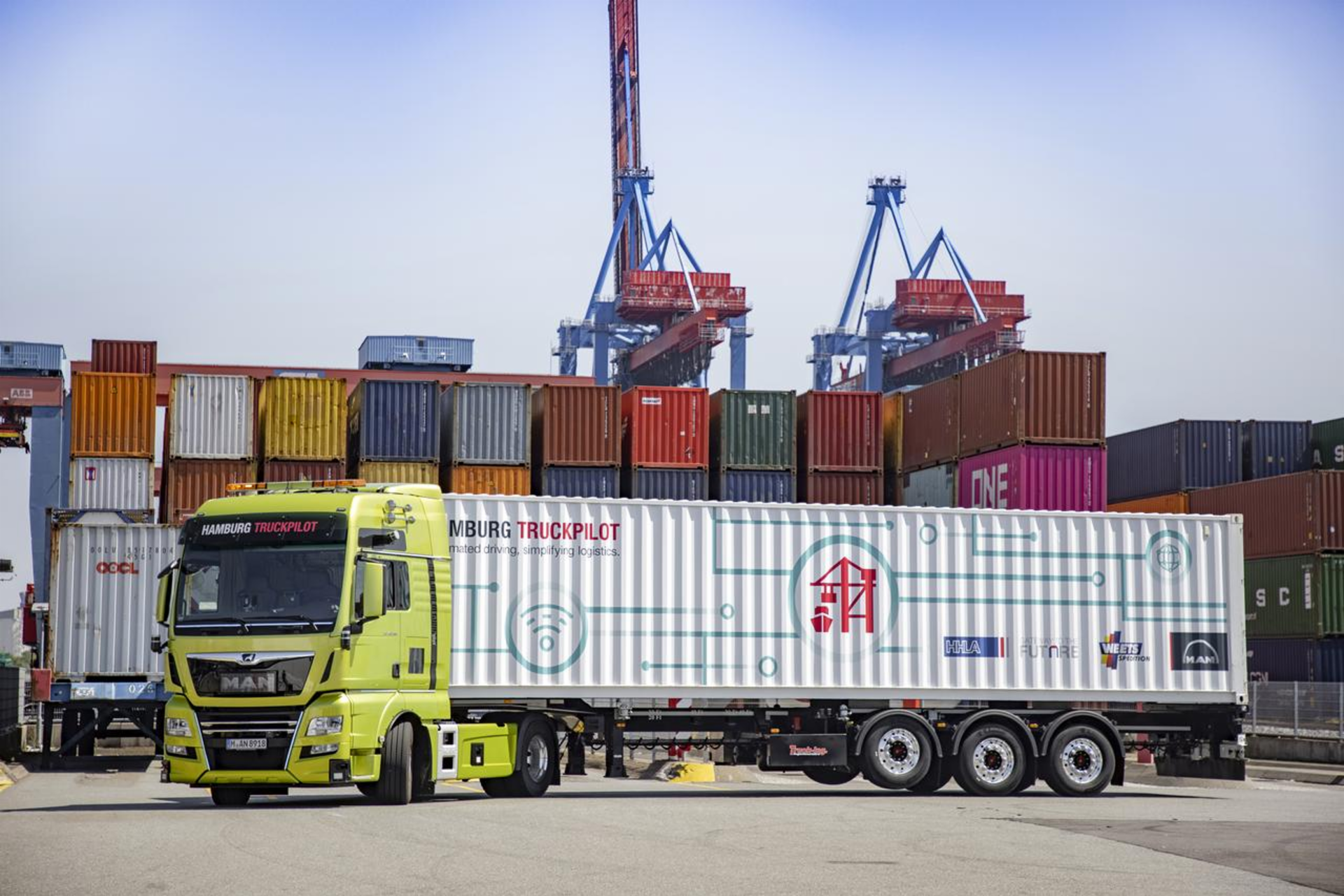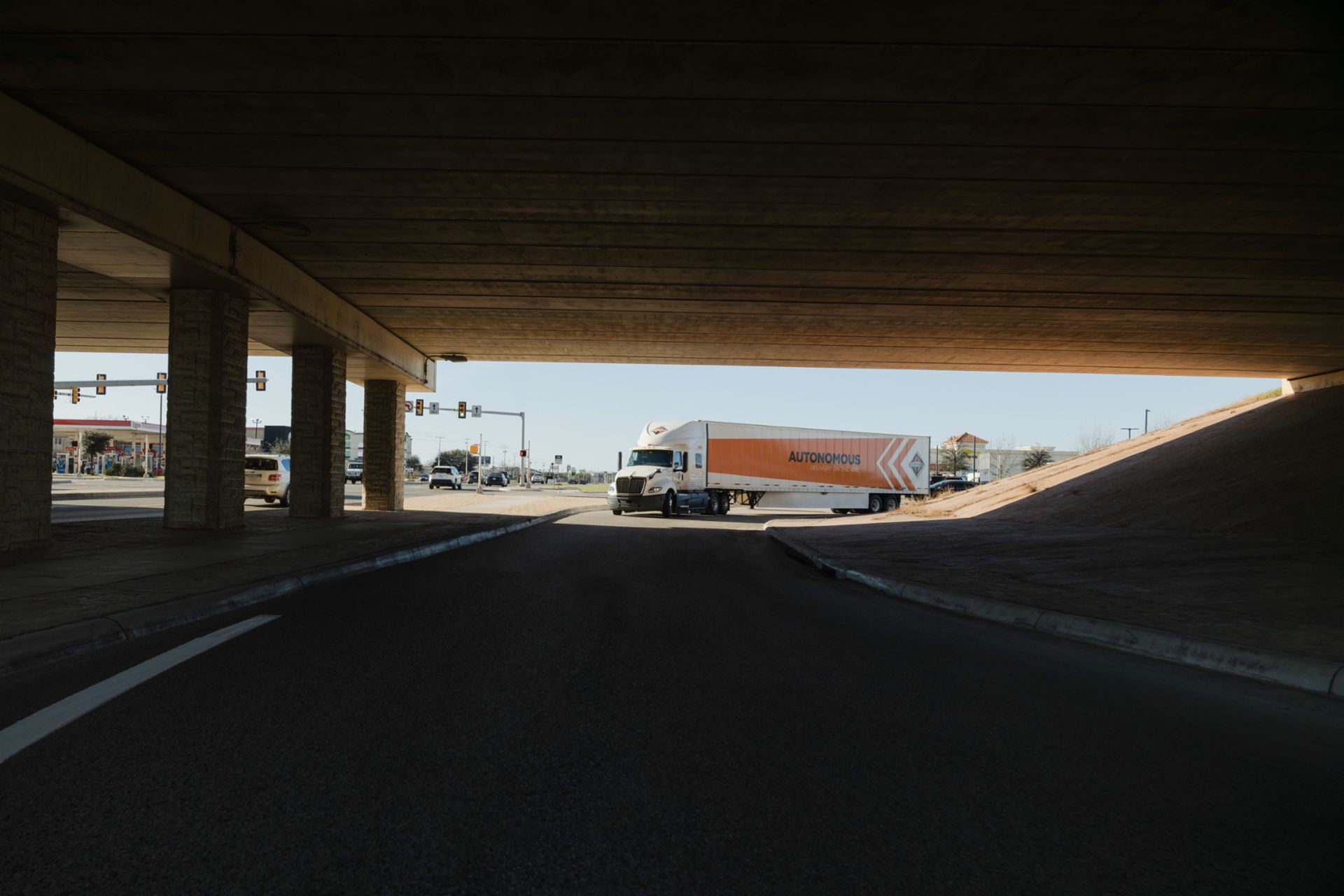From addressing driver shortages to delivering efficiency, autonomous driving has the potential to provide solutions to some of the biggest challenges in the rapidly evolving transportation landscape. It promises to fundamentally reshape the future of logistics.
With the transport sector gearing itself up for this significant upheaval, this poses several questions. What does autonomous driving mean as a concept? How do automated driving systems work? And when will self-driving vehicles become road-legal?
This page considers the various facets of autonomous driving. This includes current developments and the different levels of automation. It also examines how the technology that powers self-driving trucks works.
What does autonomous driving mean?
Autonomous driving refers to self-driving vehicles or transport systems that can accelerate, brake, and navigate by themselves. While self-driving systems are used in production, in the context of on-road transport this involves automated freight with no truck driver behind the steering wheel.
One example of this is autonomous hub-to-hub connections. With the aim of accelerating the use of autonomous trucks in logistics practice, the TRATON brands Scania, MAN and International entered into a development partnership for autonomous driving with the US company Plus in March 2024. The collaboration is intended to further advance the development of driverless transport between logistics hubs. Driverless driving between logistics hubs has the potential to increase customers' profitability, reduce emissions, improve road safety and at the same time counteract the growing global shortage of drivers. Positive practical experience with autonomous hub-to-hub transport can be seen, for example, in Scania's project with supply chain expert HAVI. Since 2022, an autonomous truck has been commuting autonomously on the approximately 300-kilometre route between the Swedish Scania plants in Södertälje and Jönköping. In addition, autonomous technology is also being used on private commercial sites such as harbors and mines.
Automation offers the potential to enhance efficiency and reduce operational costs, while also increasing safety.
Smart Trucks, Smarter Transportation

Self-driving trucks: the logistics of tomorrow

Road transport is the backbone of global trade. The transport industry is increasingly turning to autonomous trucks to address rising freight volumes. With freight demands increasing, autonomous trucks offer a scalable solution for efficiently managing large volumes of goods.
Another factor to take into consideration is the lack of enough qualified truck drivers. According to estimates, Germany alone will have a shortage of around 185,000 truck drivers by 2027. By turning to autonomous technology and reducing their reliance on human drivers, companies can mitigate these deficiencies.
Replacing internal combustion engine trucks with self-driving models will redefine the logistics landscape. This is because autonomous vehicles hold the promise of ensuring timely and secure deliveries and improved protection on the road. This will provide businesses with a competitive edge in terms of cost-effectiveness, reliability, and responsiveness to market demands, as they will be able to optimize their supply chain operations and meet customer needs more efficiently.
As automated technologies evolve, it is anticipated that autonomous trucks will support new business models within the trucking industry and provide financial growth opportunities.
New revenue streams will become feasible through the Transport-as-a-Service (TaaS) concept. In addition, companies will be able to offer automated vehicles for ridesharing, shuttle services, and innovative mobility solutions. For the logistics industry, autonomous trucks will optimize efficiency and reduce operational costs, specifically in hub-to-hub long-haul trucking routes.
Data generated via autonomous trucking will provide valuable insights into traffic patterns and user behavior. As a result, they will become an asset for monetization for commercial truck manufacturers.
The autonomous driving levels
In 2014, SAE (Society of Automotive Engineers) International published the J3016 standard to define the various development levels of automation, ranging from Level 0 (none) up to Level 5 (full vehicle autonomy).
-
A vehicle at Level 0 may be equipped with very basic assistance features like warnings. However, this does not fall under the category of driving automation; it remains fully human-operated.
-
This is the lowest level of automated driving. The vehicle features a single automated driver assistance system to support its human operator. Features include adaptive cruise control or lane-keeping assist. Both qualify as Level 1 because the driver monitors other aspects of driving such as steering and braking.
-
At Level 2, the vehicle is semi-automated as it is equipped with advanced driver assistance systems (ADAS). These can control both steering and acceleration/deceleration simultaneously under certain conditions. However, this automation level falls short of hands-off driving, as an occupant must remain engaged in the driver’s seat and be ready to take control when necessary.
-
Level 3 signifies a higher degree of self-driving through conditional automation. At this level, the vehicle can make informed decisions for itself and manage most aspects itself under certain conditions. The driver can disengage from active control, allowing the vehicle to handle tasks like navigating traffic or parking. However, they must remain alert and be ready to take control if the system is unable to execute the task.
-
Vehicles at Level 4 are capable of full autonomy in specific domains with predefined conditions. This includes urban environments or dedicated self-driving lanes. It can therefore operate and conduct tasks without human intervention, for example self-parking. However, until legislation and infrastructure evolve, their autonomy is limited to specific use cases. The vehicle still requires human control in unfamiliar or challenging scenarios.
-
Level 5 is the highest level and represents full automation under all conditions. No human intervention is required. In a Level 5 vehicle, there is no need for a steering wheel, acceleration/braking pedals, or any controls typically associated with human driving. The vehicle is designed to handle all driving tasks, and occupants are essentially passengers.
The technology behind driverless trucks
Both tech and transportation companies have developed self-driving technologies over the past few years. Driverless systems utilize a combination of cutting-edge technologies and software. Advanced sensors act as the eyes and ears of driverless vehicles.
Which sensors and technologies are used in autonomous vehicles?
-
Radar: Measures distances from objects and relative speeds using microwaves
-
Mono or stereo cameras: Support the detection of obstacles and hazards
-
Ultrasonic sensors: Measure distances from objects at close range
-
LiDAR: Measures distances from objects
These devices collect and process vast amounts of data. This is then fed into in-built software based on sophisticated artificial intelligence (AI) algorithms that send instructions to the vehicle’s acceleration, braking and steering systems. The technologies work in tandem to perceive its surrounding environment, plot a navigational path, and make real-time decisions. This ensures it operates safely and efficiently. Deep learning further enhances the system’s ability to adapt and improve over time.
Driverless vehicles are poised to become interconnected through technologies such as 5G. This connectivity will allow them to communicate with other vehicles and infrastructure to facilitate real-time data exchange and enhance overall traffic management. This will deliver a more efficient and responsive transportation ecosystem.
It’s all a question of safety

Around 90% of road accidents are caused by human error. Autonomous driving seeks to fundamentally enhance road safety by reducing these types of incidents to a minimum. This potential for increased safety will also lead to improvements in traffic flows and reduced congestion through vehicle-to-vehicle communication.
Safety is also an important factor regarding the development of fully automated driving systems. Engineers prioritize stringent testing, incorporate redundancies in sensor systems, and integrate fail-safe mechanisms to mitigate risks. As autonomous technology advances, this proactive approach to safety will be central to gaining public trust and regulatory approval.
When will autonomous driving become legal?
Despite its immense potential, there is a long way to go before autonomous driving will be widely adopted on public roads. Initially, the technology must undergo further refinement to enhance its reliability. Many people are still skeptical about autonomous technology, and public acceptance will need to be earned before self-driving vehicles are successfully integrated into the transport network. Additionally, there are complex issues surrounding insurance and liability in relation to road safety.
But what is the legal framework for autonomous driving? In the panel talk, experts from TRATON, Scania and International will answer open questions. A special focus is on the questions of why autonomous driving is an important and innovative technology for the automotive industry, what the status quo of legal regulations is in the various countries and how the TRATON GROUP, in particular Scania and International , is positioned in this respect.
Watch the video here:

The European transport network is currently only partially suitable for self-driving vehicles due to inadequate infrastructure, with an absence of the dedicated lanes, signage, and communication systems necessary. The successful transition from driver-dependent to autonomous routes requires careful planning and the integration of advanced technologies. Any evaluation of the efficiency of human drivers versus autonomous driving systems must consider factors such as experience, adaptability, and nuanced decision-making. This must be weighed up against the precision, constant attentiveness, and potential cost savings offered by autonomous technology.
Finally, there are several legal and regulatory requirements to be negotiated before an autonomous driving future can begin in earnest. Various jurisdictions around the world, such as the U.S. Federal Government and certain European Union member states, have begun to enact legislation and regulations to accommodate driverless vehicles. However, a cohesive set of laws and standardized legal framework is essential for the global deployment of autonomous trucks.
Find out more about automation and solutions underdevelopment across the TRATON GROUP at Scania and MAN.



